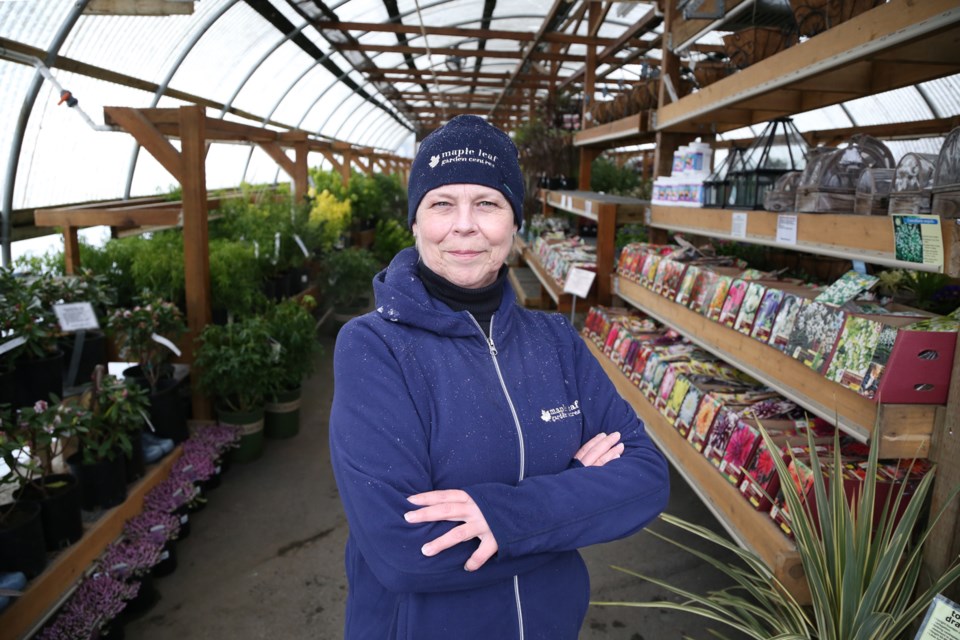If you dream of adding daisies and dahlias to your garden but end up staring at your big, backyard space and don’t know where to start, Nadine Poole has a suggestion: The first step to creating a garden is to make a plan.
“It’s very important to make a plan otherwise you end up just buying willy-nilly, and you have a garden that has no particular design to it,” she explains.
A plant specialist with an education in horticulture, Poole has worked at Maple Leaf Garden Centres in West Vancouver for 21 years. During that time, she has helped many green and not-so-green thumbs start, change and maintain their gardens.
One question she gets asked a lot is what to plant in a shade garden. “We have a lot of shade here on the North Shore,” she notes.
She adds with a laugh: “Also people tend to want to have a plant that is evergreen and flowers all the time. That doesn’t really exist.” Evergreens do tend to have leaves throughout the year, but they flower at different times.
While finding a forever flowering evergreen may be difficult, Poole says starting a garden doesn’t have to be if you make a plan. She suggests first searching the internet and looking at gardening books and magazines for examples of the type of garden you might want to create. Then consider various sections of the garden and what kind of light each section gets; whether it’s shady or whether it’s south-facing and gets full sun.
Consider the soil and whether or not it has to be amended, which basically means adding things (such as organic materials) to the soil to make it better able to support plant life. There are various ways to find out about the condition of garden soil, such as taking a scoop of the soil in your hand. If the soil sticks together it probably has a lot of clay content, and if it crumbles easily it might have too much sand, explains Poole.
However, checking on the condition of the soil may be something to consult a specialist about if you’re a beginning gardener.
Space is also an important consideration when making a plan for your garden. Space may affect the type of garden you can put in.
“If you have a small garden, perhaps you want to try for plants that don’t grow quickly to a large size that you would have to be pruning or trimming all the time,” says Poole.
Another important element to consider when planning your garden is how much work you are realistically going to want to do to maintain your garden. If you build a garden with mostly ornamental grasses and a shrub or two, it will be pretty low maintenance, explains Poole. But some gardens will require more maintenance than others.
Start creating your plan by looking at the “bones” of the garden, which consists of the major trees and shrubs. “That makes the background for the rest of the plants,” explains Poole.
Then look at flowering perennials or summer annuals to decorate the garden. Also consider that different plants may better blend with your style of house design.
“If you have a real contemporary home with lots of angles you might want to use things to soften those angles,” says Poole.
Plants like rhododendrons, which have flowers and a soft texture, might add some charm to a traditional craftsman style home, for example.
In addition to plants and flowers, you may want to consider building a vegetable garden.
In the past few years vegetable gardens have become extremely popular, says Poole, noting: “People really want to grow their own vegetables.”
Vegetables need a lot of sun, explains Poole. They usually go in the sunniest place in the yard, and most vegetables also like rich, organic soil. However, they don’t need a lot of space.
“You can grow vegetables in pots if you want to,” she says. Lettuce, tomatoes and cucumber, among many other vegetables, can all be grown in pots to create a ready supply of fresh veggies all summer.
The time to start planning a garden is between November and January, says Poole. Those are the months when there isn’t a lot of action going on in the garden. Planting usually starts in February or March.



